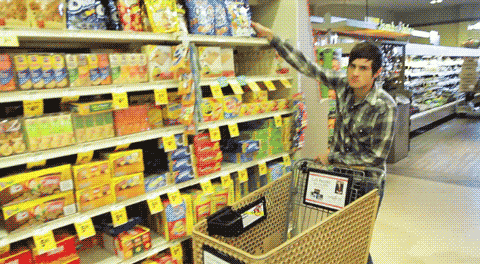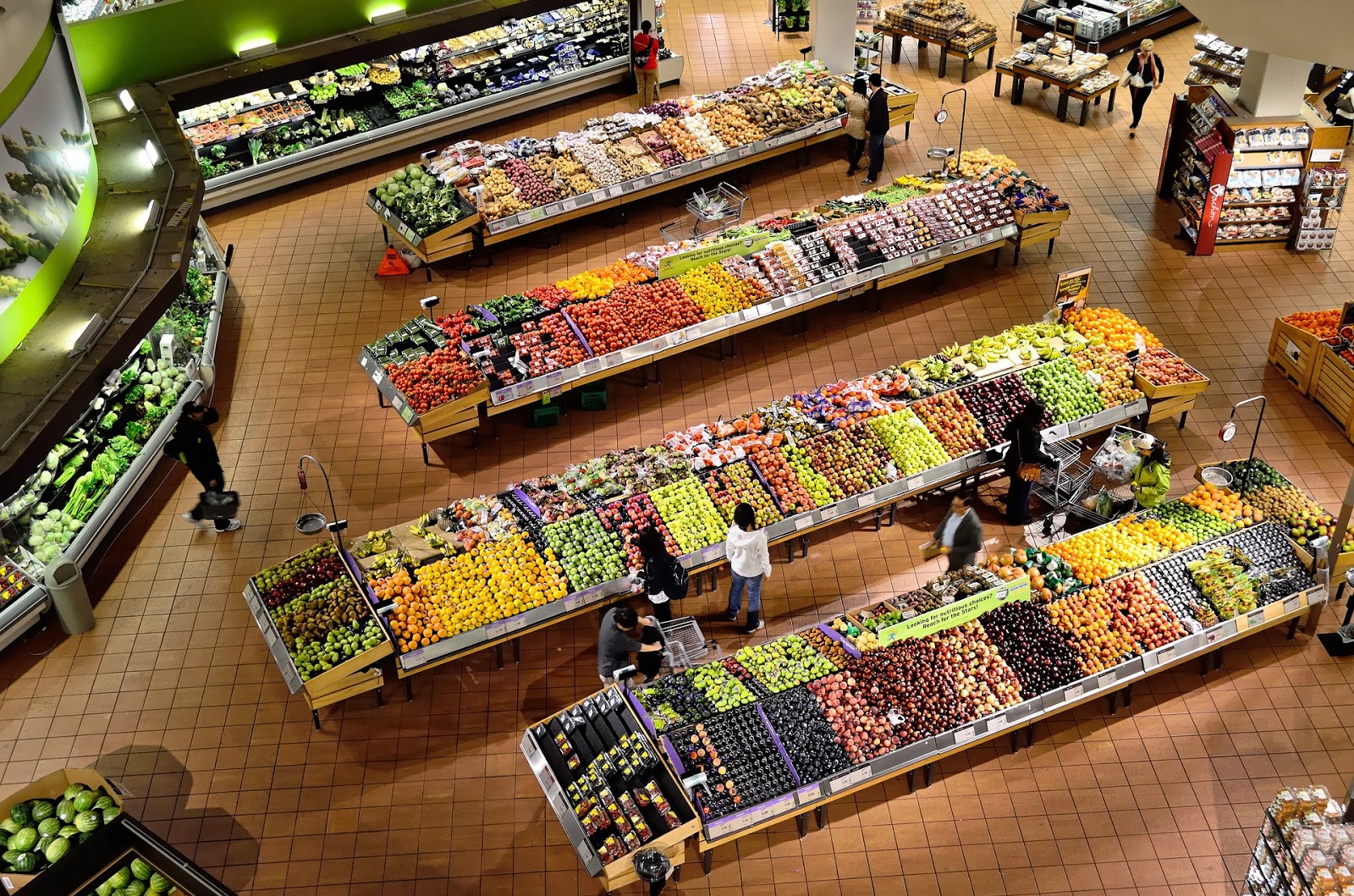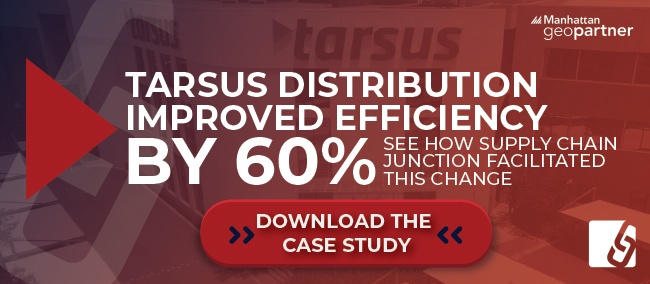How to improve your warehouse productivity by optimising your picking process

.png?width=900&name=Untitled%20design%20(84).png)
If you’re serious about streamlining your warehouse operations, then this is a great place to start. Grocery shopping can teach you a lot about warehouse picking best practices. How? Read our article, filled with warehouse management tips, to find out more.
Is your picking strategy holding you back? Surprisingly, it might be! If you’re struggling to improve operational efficiency, a small change like tweaking your picking process could go a long way towards boosting both your productivity and your bottom line.
Revisiting the golden zone: the benefits of slotting optimisation
In our previous article, The golden zone: heat mapping the fastest moving stock in your warehouse, we discussed the benefits of slotting optimisation. The golden zone is essentially the ideal placement for your fast moving stock, to help staff effortlessly pick stock. By reducing travel time between picks and improving ergonomics in your warehouse, you can improve efficiency.
Slotting optimisation has many added benefits to your business, including increased pick speed and accuracy, superior inventory control, reduced bottlenecking and decreased lead times. All of this leads to a better customer experience, which is the key to making your brand stand out.
However, this is just the tip of the iceberg.
Warehouse picking best practices: how to pick stock like a pro!
If you’re serious about streamlining your warehouse operations, you’re going to have to start picking stock as fast as this guy…

You’re probably wondering where grocery shopping fits into the equation.
Picture a visit to your local grocery store at month end. There’s lots going on, isn’t there? Everyone is trying to navigate their way through narrow aisles, picking up the essentials as quickly as possible.

The goal is to race to the checkout point ahead of as many shoppers as you can, so time is of the essence. The last thing you want is to spend three hours picking up a few simple essentials. The ideal grocery shopping trip is a quick one!
Optimising your picking strategy helps you beat 100 other shoppers to the head of the queue.
Optimising your picking strategy is not just about speed though
While speed is important, you also need to be accurate to ensure you pick up everything on your list.
The truth is, every order you receive is essentially just a grocery list. And, like your month-end shopping trip, you need to navigate the hustle and bustle of your warehouse as quickly and accurately as possible to get your order out on time and accurately.
Tips to help you optimise your picking process

Don’t mix stock keeping units (SKUs)
Mixing SKUs in a single location decreases your picking productivity. Imagine if you had to dig through a location filled with hundreds of blue, green, yellow, orange and pink pens, just to find a red one. Every second wasted searching for the right SKU decreases your warehouse productivity and this can also lead to frustration of your staff.
Optimise your picking strategy
Reducing your travel time between picks can save you up to 50% in picking hours. This has a huge impact on your productivity. Cluster or batch picking is a great way to reduce travel time in your warehouse.
To illustrate why batch picking is more efficient, let’s use the grocery shopping example again:
You and three of your colleagues need to buy lunch. To save time, you offer to collect everyone’s orders. Your colleagues each give you a shopping list, so you have four orders to fill at the grocery store. Once at the grocery store, you have two choices: you could pick each order individually or you could pick all four orders simultaneously.
Filling each order individually would mean travelling all over the grocery store, paying for the order and starting again on the next order. Picking all four at once would mean picking multiple items from each list as you move through the various aisles.
Batch picking uses the second strategy: picking items you need to fill multiple orders simultaneously. The smaller the orders, the more orders you can combine into a single trip.
You can should also prioritise orders by customer - picking urgent and VIP orders first. Your warehouse management system (WMS) can assist you with this.
Avoid vertical picking where possible
Warehouse space is costly - so it’s difficult to avoid storing stock vertically, as this is the most efficient use of space. However, picking horizontally is far quicker than picking vertically. The trick, is to store your slowest moving stock vertically, keeping your fastest moving stock in the golden zone.
Store SKUs that are regularly picked together near each other
Order picking productivity increases the more frequently staff pick from warehouse picking bins. This is called hit density. The higher your hit density, the better. If you’re only picking from every 20th pick location, you’ll have more travel time between picks than if you’re picking from every 3rd pick location.
Make sure everything in your warehouse is clearly labelled
Just like a grocery store has neatly categorised sections to help customers find their way around, so too should your warehouse. From your aisles to, bays, shelves, slots and bins, make sure everything in your warehouse is marked with large, clear location signs to help warehouse staff (especially new staff) navigate quickly.
Store inventory in the appropriate media
Again, you need to place your fastest moving stock in the most accessible storage media. Storing fast moving stock in shelving bins isn’t nearly as efficient as storing it on pallets at the front of your warehouse.
How your warehouse management software improves picking productivity
Your WMS is designed to streamline your warehouse operations. It improves picking by making it faster, improving labour allocation and reducing human error. Instead of manually having to calculate the best locations, storage media and pick paths for stock, your WMS does all the heavy lifting for you.
The right WMS, supported by an appropriate warehouse layout can help you reduce expenses on labour and storage and increase overall efficiency in your business.
Need help finding the right WMS for your business? Contact Supply Chain Junction for a needs analysis to help you find a solution that meets all your requirements.
Take a look at the results from a real-life example of a successful WMS implementation. See how Tarsus Distribution, in collaboration with Supply Chain Junction, managed to boost overall efficiency by 60% in their warehouse.
TAGS
- WMS (51)
- Warehouse Best Practice (46)
- Implementing a WMS (29)
- Managing your warehouse (19)
- Omni Channel (18)
- eCommerce (18)
- Blog (16)
- Supply Chain Best Practice (16)
- Customer Journey (9)
- Mid-Level (8)
- Warehouse optimisation (7)
- General Tips (5)
- Industry General (5)
- Information (5)
- Trends (5)
- managing your Supply Chain (5)
- saudi arabia (5)
- Press Release (4)
- smart warehouse (4)
- 3PL (3)
- News (3)
- ERP (2)
- Entry-level (2)
- ROI (2)
- Case Study (1)
- OMS (1)
- Picking (1)
- Solution-Specific (1)
- Transport Management System (1)
Take A Look At The Results Of A Successful WMS Implementation.
See how Tarsus Distribution, in collaboration with SCJ boost overall efficiency by 60%







